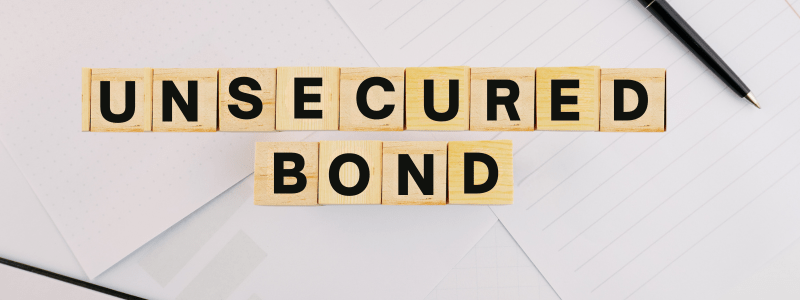
So, you’ve heard about unsecured bonds but aren’t quite sure what they’re all about? Don’t worry; you’re in the right place! Unsecured bonds can be a bit like walking a tightrope. They come with their own set of risks and rewards. But once you understand them, they can be a fascinating addition to your investment portfolio. In this article, we’ll dive deep into what unsecured bonds are, their pros and cons, and how you can make smart investment decisions with them.
Understanding Unsecured Bonds
Definition and Key Features
Unsecured bonds, also known as debentures, are a type of bond that is not backed by any specific assets of the issuer. Imagine lending money to a friend without asking for their car or house as collateral. That’s essentially what unsecured bonds are – a loan based on trust in the issuer’s ability to repay.
Difference Between Secured and Unsecured Bonds
Secured bonds are like lending money with the assurance of getting your friend’s prized guitar if they can’t pay it back. They are backed by collateral. Unsecured bonds, on the other hand, rely purely on the issuer’s promise to repay. This lack of security can mean higher risk but also potentially higher returns.
Risks of Unsecured Bonds
Credit Risk
Credit risk is the chance that the issuer might not be able to pay back the bond. It’s like trusting that your friend will pay you back without any collateral. If the issuer defaults, you could lose your investment.
Interest Rate Risk
Interest rate risk is the risk that the value of the bond will decrease if interest rates rise. When interest rates go up, bond prices typically go down. It’s like buying a concert ticket at a high price only to see prices drop later.
Liquidity Risk
Liquidity risk is the risk that you won’t be able to sell your bond quickly without losing value. Think of it as trying to sell a rare collectible – it might take time to find a buyer at the price you want.
Market Risk
Market risk involves the potential for bond prices to fluctuate due to overall market conditions. It’s like riding a roller coaster – sometimes you’re up, sometimes you’re down, and it can be quite the ride!
Benefits of Unsecured Bonds
Higher Yield Potential
One of the biggest draws of unsecured bonds is their potential for higher yields compared to secured bonds. Since you’re taking on more risk, issuers usually offer better returns. It’s like getting a bigger slice of the pie for taking the first risky bite.
Flexibility in Investment
Unsecured bonds often come with fewer strings attached, giving investors more flexibility. You can find bonds with varying maturities and interest payment schedules, tailoring your investments to fit your needs.
Diversification of Portfolio
Adding unsecured bonds to your portfolio can help spread out your risk. It’s like not putting all your eggs in one basket. If one investment doesn’t perform well, others might balance it out.
Factors to Consider Before Investing
Credit Ratings
Credit ratings, provided by agencies like Moody’s or Standard & Poor’s, give you an idea of the issuer’s creditworthiness. It’s like checking a restaurant’s reviews before dining there.
Issuer’s Financial Health
Assess the financial health of the issuer by looking at their balance sheets, income statements, and cash flow. This is akin to doing a background check before hiring someone.
Market Conditions
Keep an eye on the overall market conditions. Economic trends, interest rates, and geopolitical events can all impact bond prices. Think of it as checking the weather before planning a picnic.
How to Invest in Unsecured Bonds
Direct Purchase
You can buy unsecured bonds directly through brokers. This is straightforward but requires a good understanding of the market. It’s like buying a car directly from the dealership.
Bond Funds
Bond funds pool money from multiple investors to buy a diversified portfolio of bonds. This reduces individual risk but also means you share in both the gains and losses. It’s like being part of a travel group – you go where the group goes.
Exchange-Traded Funds (ETFs)
Bond ETFs trade on stock exchanges and offer liquidity and diversification. They’re like mutual funds but can be bought and sold like stocks. It’s akin to having the best of both worlds – the diversity of a buffet with the flexibility of à la carte dining.
Strategies for Mitigating Risks
Diversification
Spread your investments across different types of bonds and issuers. This reduces the impact of any one bond defaulting. It’s the classic “don’t put all your eggs in one basket” strategy.
Research and Due Diligence
Always do your homework before investing. Look into the issuer’s creditworthiness, market conditions, and bond terms. Think of it as studying for an exam – the more you know, the better you’ll do.
Professional Financial Advice
Consider seeking advice from financial professionals who can provide insights and recommendations based on your financial goals. It’s like having a tour guide when exploring a new city – they can help you navigate and avoid pitfalls.
Tax Implications
Taxable Income
Interest earned from unsecured bonds is usually taxable. Make sure to factor this into your investment decision. It’s like remembering that your paycheck gets taxed – you don’t get to keep all of it.
Tax-Deferred Accounts
Investing in bonds through tax-deferred accounts like IRAs can help you delay paying taxes on your earnings. This is akin to postponing dessert until after dinner – you enjoy it more when you’re ready.
Comparing Unsecured Bonds with Other Investments
Unsecured Bonds vs. Secured Bonds
While secured bonds offer lower risk due to collateral backing, they generally provide lower returns compared to unsecured bonds. It’s like choosing between a safe, steady job and a high-risk, high-reward startup.
Unsecured Bonds vs. Stocks
Bonds generally offer more stable returns than stocks, which can be highly volatile. However, stocks have the potential for higher long-term growth. It’s like comparing a slow, steady jog to a sprint – each has its own pace and potential.
Unsecured Bonds vs. Real Estate
Real estate can provide substantial returns and tangible assets but comes with its own risks like property market fluctuations. Bonds, on the other hand, are more liquid and easier to manage. It’s the difference between owning a house and having money in the bank.
Common Myths and Misconceptions
Myth: Unsecured Bonds are Too Risky
While they do carry more risk than secured bonds, with proper research and diversification, they can be a valuable part of your portfolio. It’s like saying all roller coasters are too scary – some are thrilling and safe.
Myth: Only Experts Can Invest in Unsecured Bonds
With the right resources and advice, even novice investors can venture into unsecured bonds. It’s like cooking a gourmet meal – intimidating at first, but manageable with a good recipe and guidance.
Future Trends in the Unsecured Bond Market

Technological Advancements
Technology is making bond trading more accessible and transparent. Platforms that provide real-time data and trading options are like GPS systems for investors – guiding you through complex routes.
Regulatory Changes
Keep an eye on changes in regulations that could impact the bond market. New rules can alter the risk and return landscape. It’s like new traffic laws – they change how you navigate the road.
Market Predictions
Experts predict various trends in the bond market, influenced by economic policies, global events, and technological advancements. Staying informed is key to making smart investment decisions. It’s like checking the forecast before sailing – knowing what’s ahead helps you prepare.
Conclusion
Unsecured bonds offer an intriguing blend of risks and rewards. By understanding their unique characteristics, assessing the associated risks, and employing smart investment strategies, you can make informed decisions that enhance your portfolio. Remember, investing in unsecured bonds is like exploring uncharted waters – exciting but requiring careful navigation.
FAQs
1. What are the Main Risks?
The main risks include credit risk, interest rate risk, liquidity risk, and market risk.
2. How Can I Buy Unsecured Bonds?
You can buy them directly through brokers, or invest in bond funds or ETFs.
3. Are Unsecured Bonds Suitable for Beginners?
With proper research and advice, they can be suitable for beginners looking for higher yields.
4. What Happens if the Issuer Defaults?
If the issuer defaults, you may lose part or all of your investment since unsecured bonds are not backed by collateral.
5. Can Unsecured Bonds be Sold Before Maturity?
Yes, but you may face liquidity risks and might not get the full value of the bond.
For more insights into managing your investments and achieving financial success, read our detailed article on How to Become a Successful Investor.
